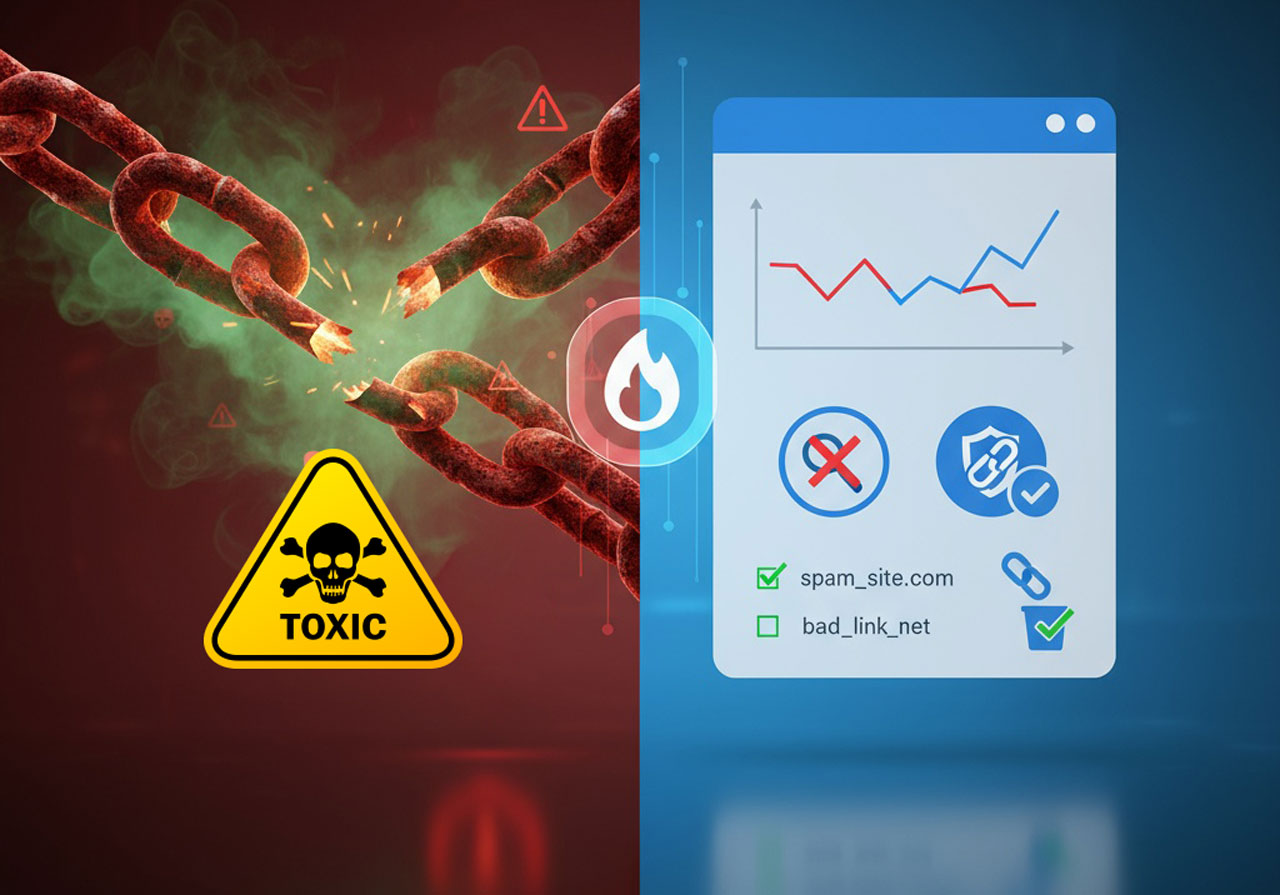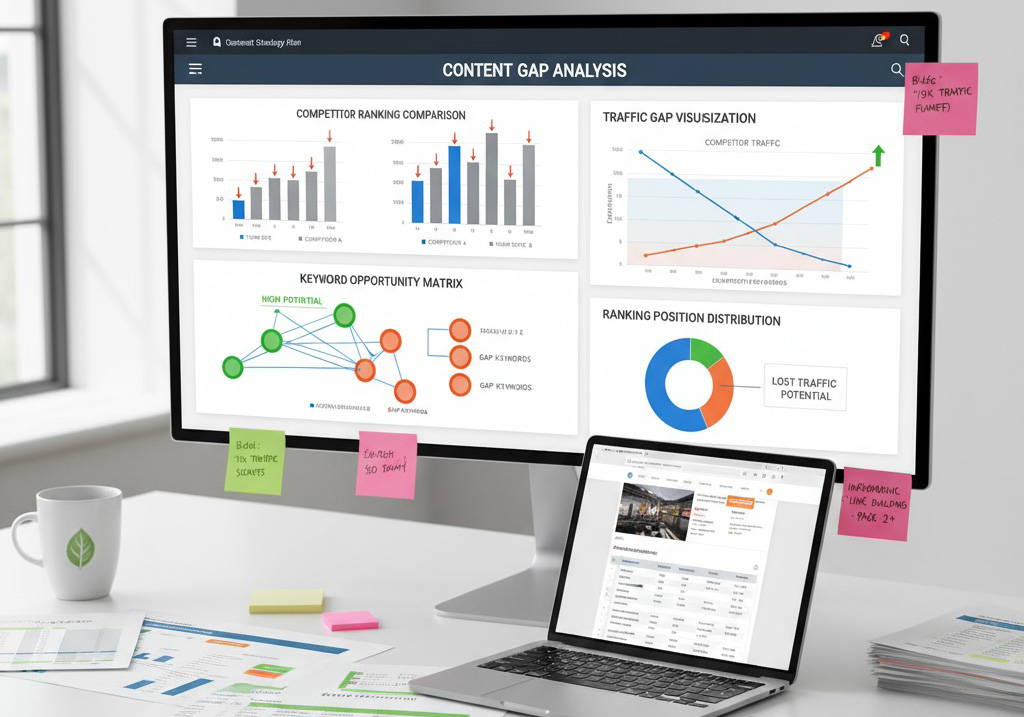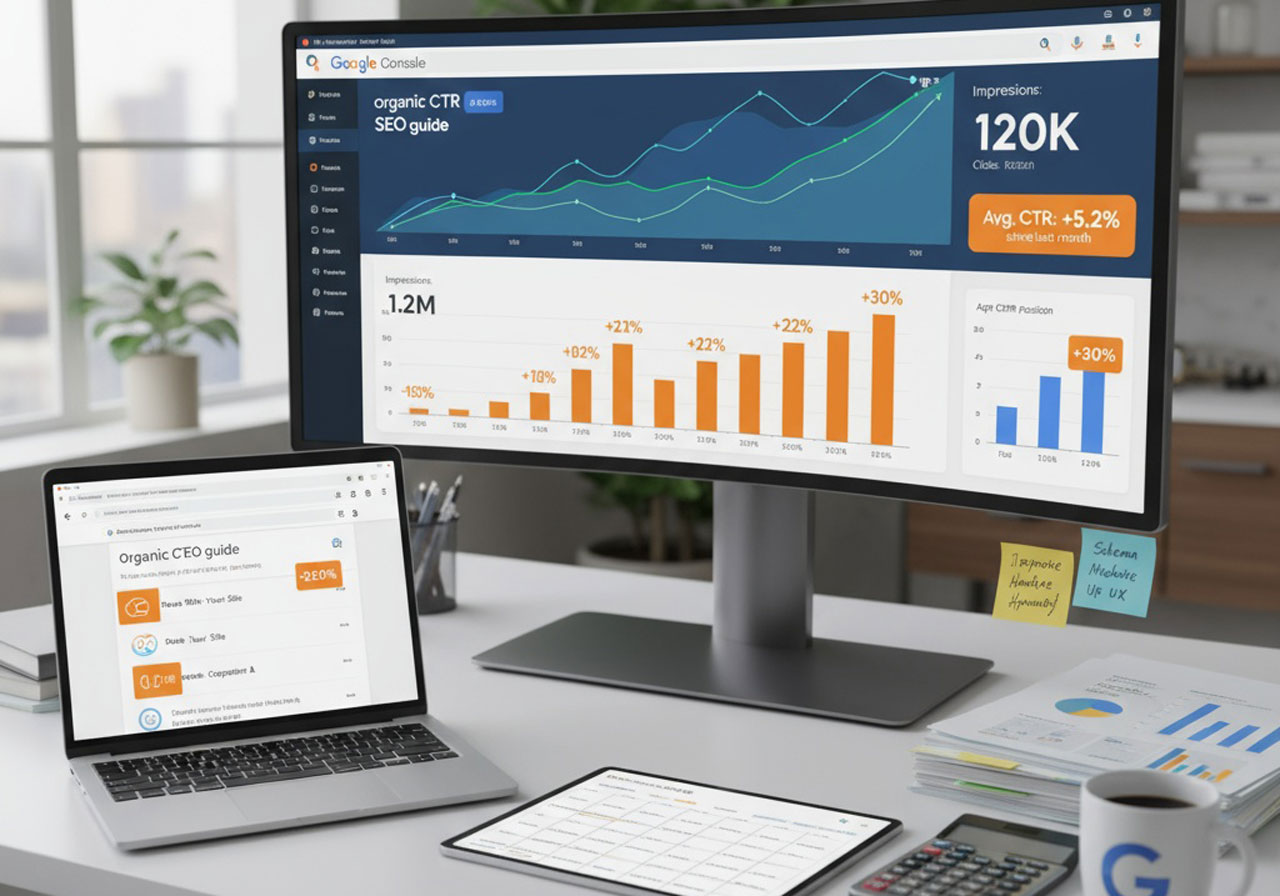SEO competitor analysis is a systematic process of evaluating your rivals’ search engine optimization strategies to identify opportunities for improving your own search rankings. By analyzing competitor websites that consistently outperform yours in Google search results, you can uncover winning tactics and capitalize on their weaknesses.
Why Competitive SEO Analysis Is Critical for Success
Search engine optimization competitor analysis provides actionable insights that directly impact your ability to rank higher than competing websites. This strategic approach helps you understand the competitive landscape and make data-driven decisions.
Key benefits include:
- Discovering proven SEO strategies that drive organic traffic
- Identifying content gaps and keyword opportunities
- Benchmarking your current performance against industry leaders
- Uncovering technical SEO weaknesses in competitor sites
Ultimately, a thorough competitor SEO audit can significantly boost your search visibility, increase organic traffic, and expand your market share.
How to Perform SEO Competitive Research: 6-Step Framework
We recommend conducting SEO competitor analysis every 3-6 months to stay ahead of market changes and algorithm updates. Additionally, perform competitor research before launching new products or after experiencing ranking declines.
1. Identify Your SEO Competitors
SEO competitors aren’t always direct business competitors. They’re websites that rank for your target keywords and compete for the same search visibility.
To find your SEO competitors:
- Search your primary keywords in Google and note which sites consistently appear in top positions
- Use tools like Semrush’s Organic Research to identify domains with overlapping keyword rankings
- Analyze both direct competitors and industry publications that rank for your keywords
Remember that competitor identification should focus on search visibility rather than business model similarity.
2. Conduct Keyword Gap Analysis
Keyword gaps represent valuable opportunities where competitors rank but you don’t. These missing keywords can become your next content targets for driving additional organic traffic.
Steps for effective keyword gap analysis:
- Use competitive analysis tools to compare your keyword portfolio with competitors
- Filter for keywords with reasonable search volume and manageable difficulty scores
- Prioritize long-tail keywords and terms with commercial intent
- Focus on keywords where multiple competitors rank in top 10 positions
Advanced filtering should consider search volume, keyword difficulty, search intent, and topical relevance to ensure you target winnable keywords.
3. Evaluate Technical SEO Performance
Technical SEO forms the foundation of search rankings. Comparing your technical health against competitors reveals critical optimization opportunities.
Essential technical factors to analyze:
- Page speed optimization and Core Web Vitals performance
- Mobile responsiveness and user experience metrics
- HTTPS implementation and security protocols
- XML sitemap structure and indexation status
Use Google Search Console for basic technical analysis or comprehensive tools like Semrush’s Site Audit for deeper insights. Compare your technical scores against top-ranking competitors to identify improvement areas.
4. Analyze Content Strategy and Performance
Content analysis reveals what types of content drive the most organic traffic for your competitors. This intelligence guides your own content creation strategy.
Key content elements to examine:
- Content length and depth of coverage
- Keyword optimization and semantic keyword usage
- Content format preferences (long-form articles, videos, infographics)
- Internal linking strategies and content organization
Pay special attention to your competitors’ top-performing pages and identify patterns in their content approach. Look for opportunities to create more comprehensive, valuable content that surpasses competitor offerings.
5. Examine On-Page SEO Elements
On-page optimization directly influences individual page rankings. Analyzing competitor pages that outrank yours reveals specific optimization tactics to implement.
Critical on-page elements include:
Title Tag Optimization
- Keyword placement and density in titles
- Use of compelling modifiers like “best,” “complete,” or “ultimate”
- Title length and click-through rate optimization
Meta Description Strategy
- Compelling descriptions that improve click-through rates
- Strategic keyword inclusion without keyword stuffing
- Call-to-action elements that encourage clicks
URL Structure Analysis
- SEO-friendly URLs with relevant keywords
- Clean, descriptive URL hierarchies
- Consistent URL patterns across site sections
6. Identify Backlink Opportunities
Link building remains a crucial ranking factor. Backlink gap analysis reveals high-authority sites linking to competitors but not to your website.
Effective backlink analysis focuses on:
- Domain authority and relevance of linking sites
- Context and placement of competitor backlinks
- Link acquisition strategies that worked for competitors
- Nofollow vs. dofollow link ratios
Tools like Ahrefs or Semrush’s Backlink Gap tool help identify the most valuable link prospects. Prioritize authoritative, relevant sites that consistently link to multiple competitors.
Advanced SERP Feature Analysis
Search engine results page (SERP) features like featured snippets, local packs, and knowledge panels can dramatically increase visibility. Monitor which SERP features your competitors dominate.
Common SERP features to target:
- Featured snippets through structured, concise answers
- Local pack results for location-based searches
- Image and video carousels for visual content
- Schema markup implementation for rich snippets
Optimize your content specifically for SERP features where competitors currently appear. This often provides easier wins than competing for traditional organic rankings.
SEO Audit Tools and Templates
Streamline your competitive analysis using professional tools and templates:
- Semrush for comprehensive competitor research
- Ahrefs for backlink and content analysis
- Google Analytics for traffic insights
- Screaming Frog for technical SEO audits
Many tools offer competitor analysis templates that automate data collection and reporting. These templates can save significant time while ensuring you don’t miss critical analysis components.
Implementing Your Competitive SEO Strategy
After completing your analysis, prioritize improvements based on:
- Quick wins with immediate ranking potential
- High-impact opportunities that address major gaps
- Long-term strategies for sustained competitive advantage
- Resource availability and implementation complexity
Create an action plan with specific timelines, responsible team members, and success metrics. Regular monitoring ensures your competitive advantages remain current as the search landscape evolves.
Measuring SEO Competition Analysis Success
Track key performance indicators to measure the effectiveness of your competitive analysis:
- Organic traffic growth compared to competitors
- Keyword ranking improvements for target terms
- SERP feature wins and increased visibility
- Conversion rate improvements from organic traffic
Regular performance reviews help refine your competitive analysis process and identify emerging opportunities in your market.
Conclusion
SEO competitor analysis is an ongoing process that provides crucial insights for search marketing success. By systematically analyzing competitor strategies, you can identify opportunities, avoid costly mistakes, and develop more effective SEO campaigns.
The key to successful competitive analysis lies in consistent execution, comprehensive data collection, and strategic implementation of insights. Start with the framework outlined above, and adapt your approach based on your specific industry and competitive landscape.
Remember that search engine optimization is dynamic – what works today may not work tomorrow. Stay vigilant, monitor competitor activities regularly, and be ready to adjust your strategy as the competitive landscape evolves.














